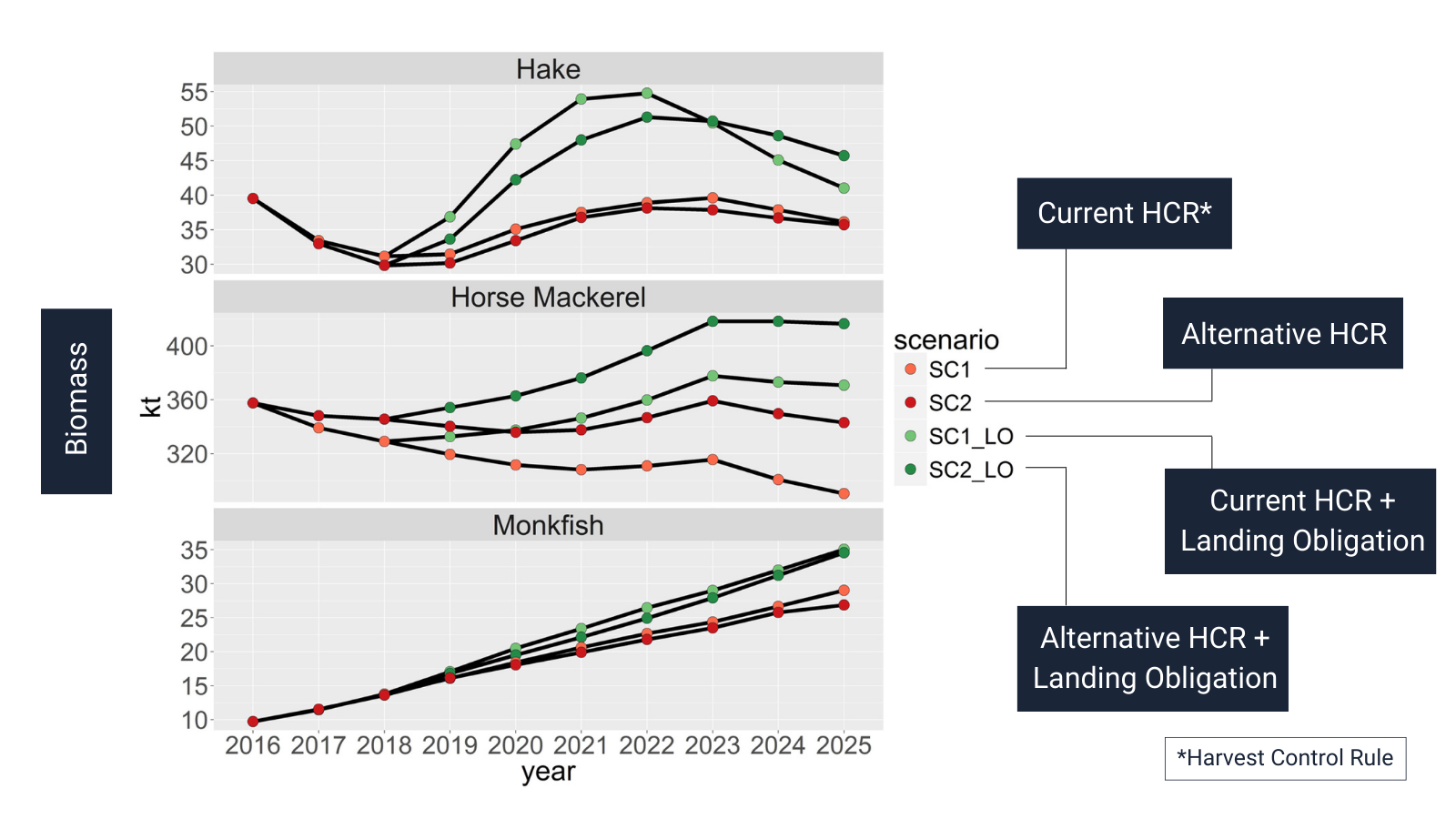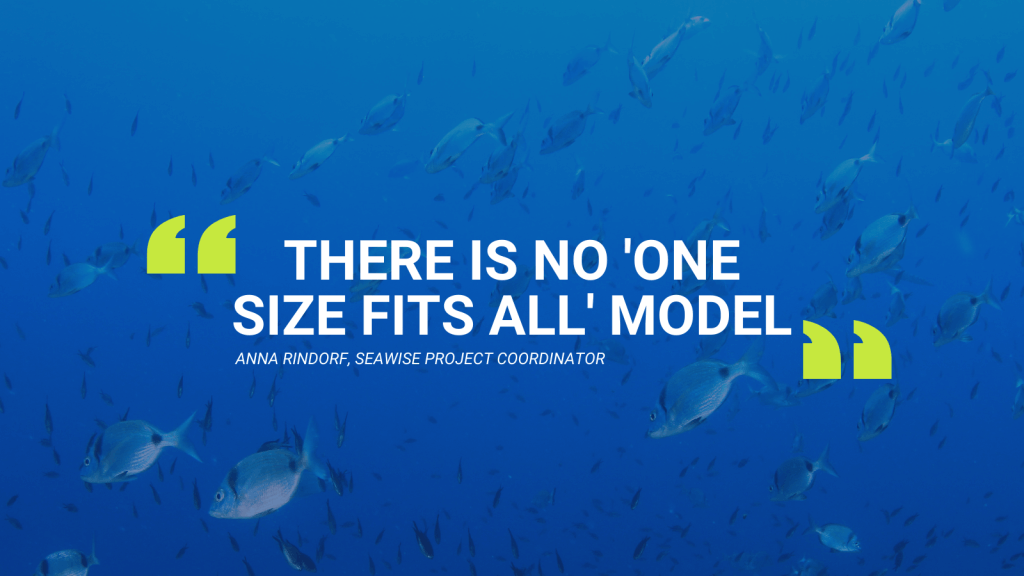“Models” have become essential to fisheries management. Typically, the preserve of mathematicians and statisticians, their effective use can unlock key insights for the management of fisheries, and understanding them can be a challenge for those without experience in them. In this blog post, we bring models to the surface, exploring what exactly they are, how they work, and how SEAwise seeks to maximise their benefits.
What do we mean by “modelling”?
In science, modelling means describing real-life concepts in mathematical terms to estimate phenomena, including those that cannot be directly observed (such as the true size of a fish stock) or predict what might happen in the future (such as whether a fish stock will increase or shrink in size). These tools allow us to simulate, or ‘model’, changes to anything in the ecological, social, or economic spheres – from global temperature to voter choice to employment. But while models can offer detailed forecasts, by their nature they include a margin of error – known as ‘uncertainty’ – which must be accounted for when using their results.
To run a model, we need to include the parameters which we think will have an effect on the outcomes we want to know about. During the modelling process, we can change the values of different parameters, to predict how different circumstances might lead to different outcomes. For example, a fisheries manager might want to know how different limits on fishing (known as Harvest Control Rules) could be expected to affect the status of their fish stock. In the example on the left, the model has been used to predict how the biomass of three different fish stocks would change depending on the Harvest Control Rule (HCR) used, and whether the HCR is used in combination with a Landing Obligation. (N.B. A Harvest Control Rule is a pre-agreed guideline that dictates how much fishing is permitted, based on indicators of the target stock’s status).

From Garcia, D. et al. (2017) FLBEIA: A simulation model to conduct Bio-Economic evaluation of fisheries management strategies, SoftwareX, 6: pp141-147
How are models used in fisheries management, including EBFM?
Modelling has become an essential part of fisheries management, which has traditionally and most commonly been based on a single-species approach (summarised in one of our earlier blog posts). Under this approach, modelling focuses on one specific species – the target species – by taking into account variables that are specific to that species alone, such as how often it breeds, or how much of it we are catching. Decision-makers then use the results to help determine how many fish – or how many fish of a certain size, age, or sex – can be taken from the stock of that species without depleting it.
However, the single-species approach fails to account for the many other human and environmental elements that inevitably affect any fish stock. After all, it’s not much good basing your harvest strategy on a model that counts how many fish are being caught by your fishing fleet, but doesn’t account for anything else that may be impacting that species – things like the effect of rising sea temperature on breeding success, or an increase in a competitor species.
This is where Ecosystem Based Fisheries Management (EBFM) comes in. At its simplest, EBFM incorporates all the ecological, social, and economic elements that affect a fishery. That means elements from the fishery itself – including the biology of the species, interactions with other species, habitat, and fisher behaviour – and from beyond the fishery, including consumer choices, pollution, and laws and regulations. It also means that EBFM requires models that can account for a huge number and variety of variables. One model that fits this bill is FLBEIA, described as ‘a flexible software to conduct bio-economic evaluation of fisheries management strategies’ by lead developer Dorleta Garcia (our Evaluation of Management Strategies Work Theme Lead) and her co-authors.

How SEAwise is using models
Models will form a core part of the “machinery” of the SEAwise tool, even though it won’t be obvious to users when they’re busy using the tool to explore potential outcomes of their fisheries management decisions. And because models will be so integral, a big bite of SEAwise’s current work involves reviewing many different models that have already been developed or are in development, to determine which ones can be expected to provide the most accurate results when slotted into the tool. SEAwise’s other research activities, which include stakeholder workshops and interviews, will feed into this critical analysis. The models are also being evaluated in terms of how well they can be reconciled or combined with others – because as SEAwise’s Project Coordinator Anna Rindorf said at our recent AGM, ‘there is no “one size fits all” model’.
So, what does this look like in practice? Find out in our next blog post!
Stay up to date with SEAwise news and research, hear about upcoming events, and receive updates on fisheries news from across the European seascape.